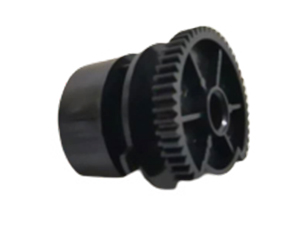About us

Hotline:+86-186-8100-4097

Usually metal gears are designed by a process of machining based on basic rack principles, and many designers of plastic gear housings take a similar approach. The pitch circle defined by the metal gear describes the installation distance between the gear and its cutting, and the tip modification refers to the additional adjustment characteristics of the cutting tooth in order to machine the desired tooth shape. The full depth of cut of the gear actually refers to entering the gear blank. how much. However, these concepts are not needed for plastic gear housings and they tend to cause confusion and misunderstanding.
The benefit of the basic rack approach is that it allows the cut gears to mesh properly with each other in any pair, whereas plastic gear housings are typically designed for high volume applications. It should be designed to make the gear pair as strong and robust as possible, rather than making the gears adaptable to a certain range of applications. The approaches listed below are design methods to achieve specific transmission requirements and achieve the desired gear function.
At present, almost all spur plastic gear housings are molded, and the mold cavity is machined by wire cutting. Designers can design fully idealized digital gears and then machine them into solid gears by wire cutting.
An involute gear drive is essentially equivalent to a cross-belt drive. The gear teeth use the same transmission path to produce the same rotary effect, the driving wheel pushes the driven wheel through the transmission path, and the path is moved from one base wheel to the other by the belt passing through the node. Many parameters of cross-belt drive are exactly the same as gear drive, such as base circle, pitch circle, pressure angle and base circle tangent length.

Through kinematic geometry and involute principle, the size of the base wheel can be relatively determined according to the required reduction ratio of the gear pair. Size is not important at this stage, as the gears can be made to the desired size. Then, select a base circle tooth thickness and draw an involute tooth profile on a gear and its distance from the gear to determine its working pressure angle. The outer diameter of the gear can be ignored. At this point, the gear has been determined, and other parts can be developed by themselves. Part of the structural gear rotates along the pitch circle of its mating gear to form the tooth profile of the mating gear. The tooth tip is cut off at a reasonable diameter, and the second gear revolves around the pitch circle of the first gear to form the root portion. This is the design of gears by solid conditions. Considering the eccentricity and molding tolerances, the gear teeth need to be thinned or slightly pulled outward to allow for sufficient clearance, and the gear outer diameter tolerance is smaller than the solid body to avoid interference.
This self-generating construction technique allows designers to maximize the action and performance of the gears when the plastic gear housings are engaged. The teeth can be made longer to increase the meshing working area, or thicker to increase the strength of the teeth. Still to be aware of are the contact ratios and gear strength issues involved with conventional gears.
Another advantage of this design method is that the CAD-drawn geometry can be used for comparison with molded gears—measured optically or with a scanning CMM.
The next critical step in the manufacture of plastic gear housings is mold design. At this stage, it is necessary to estimate the shrinkage of the plastic gear housing geometry, otherwise many qualified gear drives will not work properly or not at all.
The shrinkage of plastic gear housings is complex and can be roughly divided into two aspects: macroscopic and local. The shrinkage of the main parameters of the gear base and the simple symmetrical gear is basically the same, including the outer diameter of the gear, the diameter of the root circle, the base circle and the pitch circle. The local shrinkage of a single gear tooth is completely different, with almost no shrinkage in tooth thickness and other parameters. In some cases there may also be swelling due to local effects, this is especially the case in hollow crystalline materials such as nylon and .

Copyright © 2022 Dongguan Huasheng Precision Mould Co., Ltd. All rights reserved【Baidu Statistics】【Admin】【Back to top】
Hotline
Mr. Liu
Mobile
